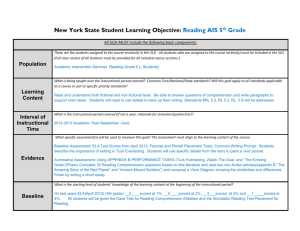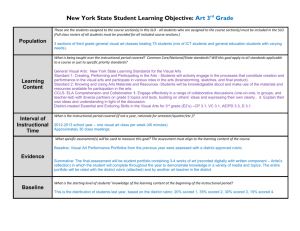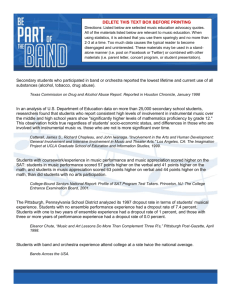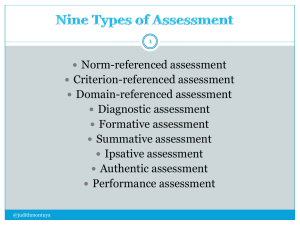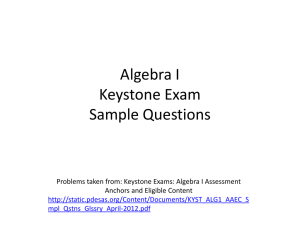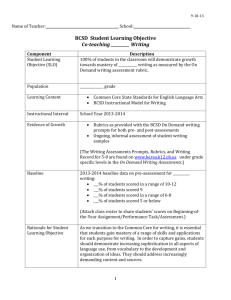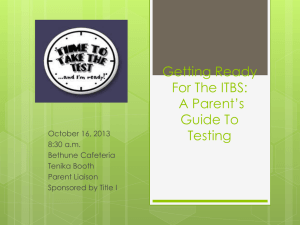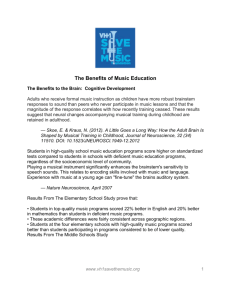Instrumental Music
advertisement
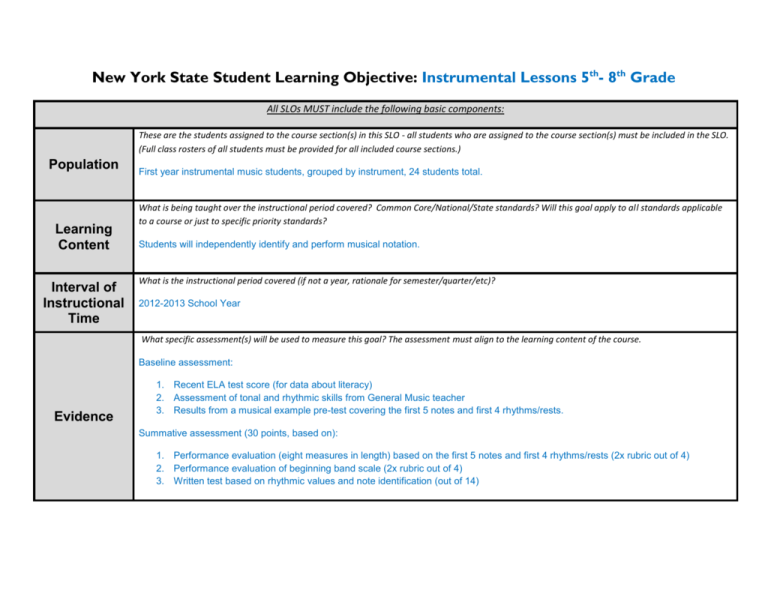
New York State Student Learning Objective: Instrumental Lessons 5th- 8th Grade All SLOs MUST include the following basic components: These are the students assigned to the course section(s) in this SLO - all students who are assigned to the course section(s) must be included in the SLO. (Full class rosters of all students must be provided for all included course sections.) Population Learning Content Interval of Instructional Time First year instrumental music students, grouped by instrument, 24 students total. What is being taught over the instructional period covered? Common Core/National/State standards? Will this goal apply to all standards applicable to a course or just to specific priority standards? Students will independently identify and perform musical notation. What is the instructional period covered (if not a year, rationale for semester/quarter/etc)? 2012-2013 School Year What specific assessment(s) will be used to measure this goal? The assessment must align to the learning content of the course. Baseline assessment: Evidence 1. Recent ELA test score (for data about literacy) 2. Assessment of tonal and rhythmic skills from General Music teacher 3. Results from a musical example pre-test covering the first 5 notes and first 4 rhythms/rests. Summative assessment (30 points, based on): 1. Performance evaluation (eight measures in length) based on the first 5 notes and first 4 rhythms/rests (2x rubric out of 4) 2. Performance evaluation of beginning band scale (2x rubric out of 4) 3. Written test based on rhythmic values and note identification (out of 14) What is the starting level of students’ knowledge of the learning content at the beginning of the instructional period? Baseline On recent ELA: 4% scored 1; 20% scored 2; 65% scored 3; 11% scored 4. On music assessment, using the 4 point district-wide rubric: 16% scored 1; 47% scored 2; 31% scored 3; 6% scored 4. Target(s) What is the expected outcome (target) of students’ level of knowledge of the learning content at the end of the instructional period? Eighty percent of all students will score 24 points or higher on the summative assessment (out of a possible 30 points) How will evaluators determine what range of student performance “meets” the goal (effective) versus “well-below” (ineffective), “below” (developing), and “well-above” (highly effective) See ranges as specified. HEDI Scoring HIGHLY EFFECTIVE EFFECTIVE DEVELOPING INEFFECTIVE 20 19 18 17 16 15 14 13 12 11 10 9 8 7 6 5 4 3 2 1 0 99100 % 9798 % 9596 % 9294 % 8891 % 8587 % 8284 % 7981 % 7678 % 7375 % 7172 % 6870 % 6467 % 6063 % 5759 % 5356 % 4952 % 4548 % 4044 % 3039 % <30 % Describe the reasoning behind the choices regarding learning content, evidence, and target and how they will be used together to prepare students for future growth and development in subsequent grades/courses, as well as college and career readiness. Rationale The learning content is based on the NYS Standards for the Arts (1, 2) which are the two standards that most directly impact beginning instrumental music students. The baseline assessment is taken from prior knowledge of what is learned in general music classes, ELA scores and results from a musical pre-test. The summative assessment is based on identification of specific musical notes and rhythmic material and applying them to performance on a musical instrument. The summative score is a cumulative score, with equal weight given to each of the 3 assessments. The expected outcome is that students will take their prior knowledge of musical notation and rhythm and will be able to transfer and apply that knowledge to a musical instrument through performance.
